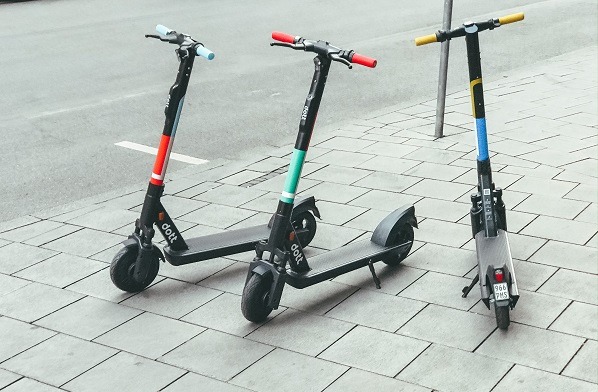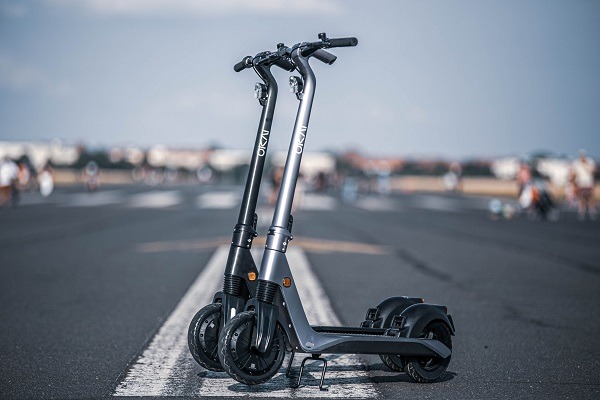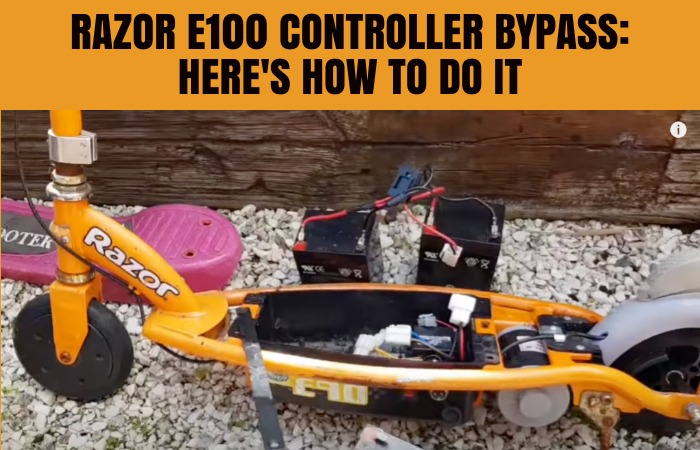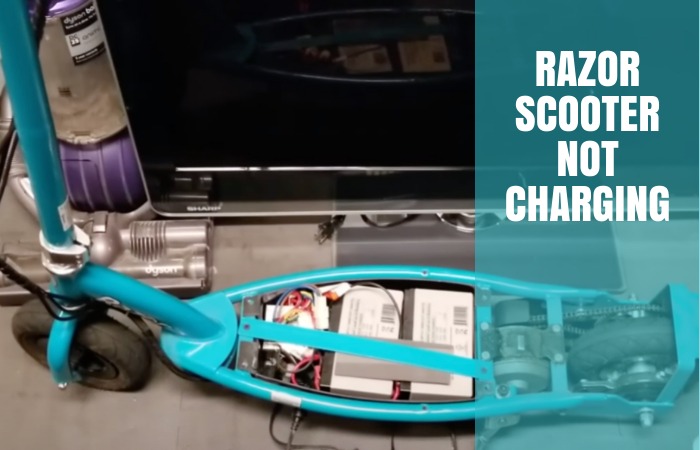7 Tips for Scooter Bearing Maintenance
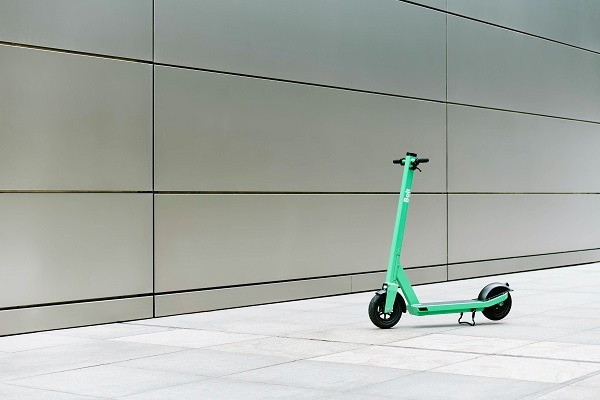
The bearing of the scooter is often something that scooter users disregard. But keep in mind that scooter bearing is significant. The longer you ride your scooter, the more will wear down your scooter bearings. Over time, the bearings absorb so much abuse that they affect your scooter’s performance. Your only choice at that point is to replace them with new ones in order to maintain your scooter performing at its best.
So, if you do not wish to waste money to replace your bearings, you need to do proper maintenance of your bearing. And how to do that? Do not worry. You do not need to go through lengthy manuals to find the answer because today, we will discuss scooter-bearing maintenance tips with you.
How Many Bearings Does a Scooter Need?
There are six bearings in all. A typical scooter requires six bearings in total, two for each wheel and two for the headset. So naturally, the primary function of these bearings in your scooter is to minimize wheel friction while it rotates on the axle. As a result, your scooter will roll more smoothly and quickly.
Consequently, these bearings are subjected to a great deal of damage. They become damaged and worn out with time. Worn-out bearings are ineffective; they make an unpleasant crunching noise and waste power due to their resistance to smooth rolling.
So, to avoid these issues, we’ll show you how to maintain them down below correctly.
Bearings look rusty and are making noise.
If you are facing this problem, then we got a quick fix for you. If your bearings are rusted, it’s because you rode your scooter in the rain. If you choose to ride your scooter in the rain, be aware that it could rust and perhaps seize. If you get caught in the rain, dry your bearings as quickly as possible and apply a tiny amount of 3-in-1 bike oil to them.
Make sure to never wipe the bearings with WD40. Because WD40 eliminates the oil inside your bearings, it is a degreaser that will damage them. Bearings are not warrantable and are classified as a wear and tear item unless they are defective right out of the box, which is extremely rare.
7 Tips for Proper Maintenance of Scooter Bearing
It’s a good idea to clean and oil your bearings on a regular basis to ensure that they operate at their best. This will extend the life and longevity of your bearings, which will eventually allow you to get the most out of them.
When a bearing is used or kept in a wet and filthy environment, its lifespan is significantly reduced.
1. Lubricate Your Scooter Bearings
Let us see how you can lubricate your bearings.
- Remove the bearings from the wheel; you can check out the tutorial on YouTube on how to open scooter bearings. It is a really simple process.
- For this step, you will need a brush. Clean all exterior surfaces of the bearings with the brush to ensure that they are dirt-free. Open and closed bearings are the two types of bearings that you will need to maintain when it comes to scooter bearings. Sealed bearings may be maintained by carefully removing the shield, but open bearings are simple to maintain.
- In case bearings are sealed, a drawing pin can be used to remove the seal. A tiny C-clip holds the metal shields in place on some closed bearings with metal shields. Before the shield can be removed, the C-clip must be removed using the drawing pin.
- It’s also a good idea to clean the seals and C-clips if they’re included. Then, with a drawing pin or Stanley knife, remove the seals from the bearing without the C-clip.
- Take any cleansing agent of your choice. Place the bearings in a sealed container containing the cleansing agent and agitate it for a few minutes. Any filth that has accumulated will be dissolved as a result of this.
- Retrieve the bearings from the box and spin the bearings to remove the remaining washing chemical. Using an air compressor to blast away the fluid is another effective option. Finally, wipe the bearings by placing them on a paper towel or cling film.
- Check to see if the cleaning was effective. Hold the bearing in place on the inner ring and rotate it lightly. It’s because the bearing isn’t cleaned thoroughly enough if it doesn’t spin freely or makes a crunching sound. If you still hear the crunching sound, then you need to repeat the cleaning procedure with a new washing agent. Likewise, you might need to repeat the process for really filthy bearings.
- Lay the bearings on a clean towel or kitchen tissue once again. You can now use oil or grease on the bearings. Use 1-2 drops of oil or 3mm grease evenly dispersed within the bearing; not more, since it will collect dirt. By spinning the bearings, make sure the oil/grease is evenly spread.
- Now you are done with the cleaning process, just put the bearings back to the shield and insert them back to the scooter wheels. By now, you should have clean and new bearings.
- It is essential that you run your scooter a few miles as it will evenly distribute the grease or oil into your bearings.
2. Remove the wheels from the hub and oil the bearings without removing them. Excess oil pouring into the urethane should be avoided at all costs since, first and foremost, oil on the urethane is highly slippery and potentially hazardous. Second, when urethane to hub linkages come into touch with oil or water, they can totally break down, leading to a de-hub.
3. Without removing your wheels, apply Speed Cream or a suitable lubricant to your Bearings. This will extend the life of your Bearings while also reducing damage to your Axles and Bolts. In addition, you won’t have to constantly re-tightening Axles and re-applying the Thread locking solution if you choose this technique. But, with this method, there will always be oil on your wheels.
4. Remove the wheels and use a bearing puller to remove the bearings. Make sure you’re using the suitable Bearing Spacers for your wheels, and inspect them for damage and wear.
5. Bearings are consumable parts that will need to be replaced very soon if not properly maintained as described above. Cheap bearings aren’t bad; they need to be maintained and changed more frequently.
6. You won’t be able to apply speed cream or another suitable lubricant to Sealed Bearings. Also, because the Bearings are encased in the Bearing case, you won’t be able to apply these oils or creams; you need to remove the seal first to use the grease.
7. The bearings should be pretty well shielded if the seals surrounding your bike’s wheel axles are in excellent shape. Keep the wheels clean, but avoid getting too near with a pressure washer, which can blast the oil out of the bearings, especially if they’re open. Open bearings can occasionally be accessible; if the balls can be seen, check sure they’re packed with grease.
How long do wheel bearings last?
Scooter wheel bearings may last 100,000 miles or more if properly maintained, but blowing out the oil or riding in deep water, as well as severe impacts from off-road riding, wheelies, and other activities, can decrease their life.
Bearings with sealed faces should require less care, but open-cage types have a higher chance of wearing out or getting damaged after just a few years of use if they’re not correctly maintained.
How to see if my bearings need replacement?
Sometimes, you have no option left but to replace your scooter bearings; let’s say how you can check whether your scooter bearings need replacement. Worn bearings can cause uncertain handling, so don’t wait until you notice! Check that the wheel spins freely when it is off the ground.
After that, grab the top and bottom of the tire and rock it back and forth. Turn the wheel a little, then turn it again till it’s fully rotated. Make sure the bike isn’t moving, but if you hear a bang or notice any movement, it’s an indication that the bearings are worn out and need replacement.
Conclusion
If you do not want to replace scooter bearings continuously, you need to do proper maintenance to sure longevity. The best way to do maintenance of scooter bearings is to clean and lubricate them once in a while, but the maintenance process can be confusing if you do not know how to do it.
Hence, we wrote this Scooter Bearing maintenance tips guide to help you properly maintain your scooter bearings.

